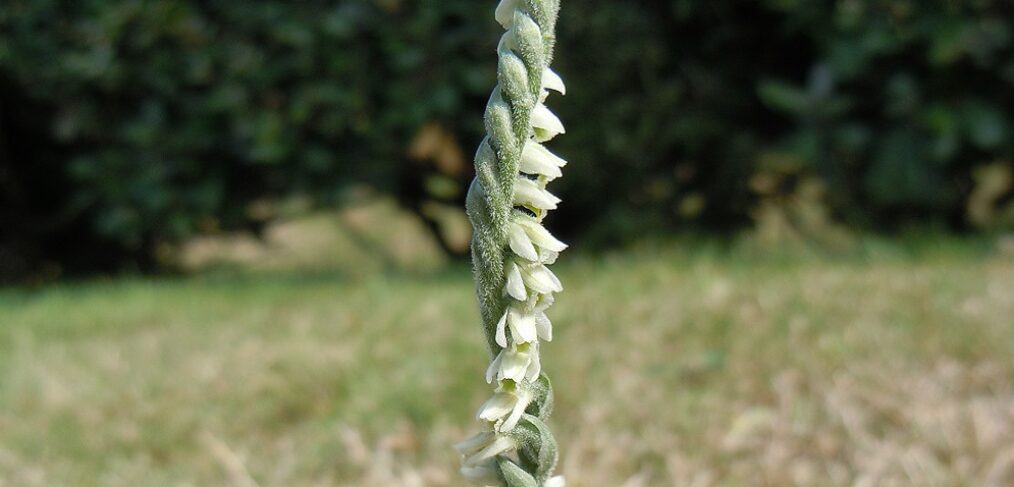
species of the week #75 – autumn lady’s-tresses
The dainty orchid, only between 12 – 25 cm high, is a great speciality of our native flora. With a flowering period from the end of August to mid-October, it is the latest flowering native orchid and smells exotically of vanilla. The flowers are usually arranged in a single row like a spiral staircase on the stem. Its main habitat is the pastures of wandering sheep herds, where it is most often found. Unfortunately, the species has been in sharp decline since 1950, accelerating since about 2000.
| Distribution status | Threatened with extinction |
| Remaining deposits | Three individuals left in the Middle Rhine region |
| Last sightning in rhineland-palatinate | current |
| Habitat | Extensively managed, short meadows |
| Threat | Intensive grazing or mowing, nutrient input |
A continuous decrease in the occurrence of the autumn orchid, especially since 2000, has been noted by the Arbeitsgemeinschaft heimische Orchideen. In 2000, for example, there were still 150 flowering plants in Rhineland-Palatinate, in 2015 only three. In 2021, three specimens were sighted in Rhineland-Palatinate. The orchid experts assume that the slow extinction of the autumn hellebore is linked to the decline of transhumance. In the Saarland, the species was also still found in various places until the 1940s, since when it has been considered lost there.
The autumn orchid only thrives under very specific conditions and depends on a precisely timed use of its habitats. It is an absolute site specialist and disappears immediately if there is too much nutrient input in the semi-arid grassland or if the vegetation is too tall. Thus, its growing sites must have been grazed or mown with short grasses by the end of July. Immediately after this use, the meadows or pastures must have a resting phase, because now the orchid develops its flower shoots in a relatively short time with optimal exposure to light. If grazing or mowing does not take place at the right time, other, more competitive species will overgrow the autumn orchid, so that it will not flower due to the lack of light. The dormant phase should last until the end of September. After that, the areas can be extensively grazed again or mown once more.
Click here for more exciting species of the week
Image: By Patrice78500 – Own work, CC BY-SA 4.0, https://commons.wikimedia.org/w/index.php?curid=63020359
